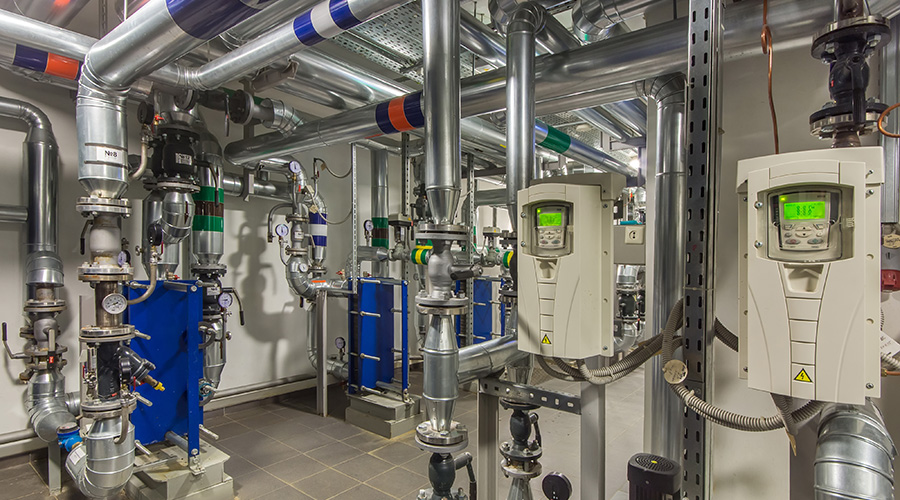Spot Coolers: Rent or Buy
Managers must consider many factors when facilities need temporary solutions for cooling needs
Maintenance and engineering managers would rather not contact HVAC suppliers and rental companies for spot cooling solutions.
But those who manage institutional and commercial facilities and need to keep occupants comfortable often find that spot cooling systems are a reliable last option. Spot coolers can move among locations should the need arise. They also make sense from economic and energy-consumption perspectives in comparison to precision cooling and mini-split systems. Spot cooling might also be a good fit for companies with so-called green initiatives, since newer models use environmentally friendly refrigerants.
Managers need to take several specific steps when confronted with emergencies like power outages, natural disasters and system failures and how to keep buildings operating at optimal temperatures.
Money talks
Managers responsible for buying and overseeing spot cooling systems need to consider several key factors prior to purchasing or renting. First, they need to be familiar with the cooling requirements of the specific space or area, considering factors such as square footage and insulation.
Next, they should be aware of the power requirements and electrical infrastructure necessary to support spot coolers, ensuring compatibility with the facility’s electrical system. For example, small spot coolers often use standard electrical plugs. However, as the capacity of the machine increases, so do voltage and fuse-size requirements, which calls for different types of outlets.
Third, it is important to evaluate the proper placement and ventilation of spot coolers to optimize air flow and cooling efficiency, keep occupants safe and understand the way to properly set up and maintain the cooler. It is also important to consider how frequently a facility might use the spot cooler, a determination that will decide whether it is wiser to purchase or rent.
One common error managers make is either under- or over-estimating the cooling capacity needed for a specific area, says Aaron Parker, director of communications for Daikin Applied.
“Insufficient cooling can lead to a less-than-comfortable environment, while excessive capacity may result in unnecessary energy expenses,” he says.
Another mistake is failing to consider the electrical requirements and compatibility with the facility’s power infrastructure. Failure to ensure that the spot cooler’s power needs to align with the available electrical supply can lead to operational issues, such as blown fuses and potential damage to equipment. Inadequate ventilation and improper placement of spot coolers are also common errors.
“Facility managers sometimes place spot coolers in areas where airflow is restricted, diminishing their efficiency, or not venting correctly,” Parker says. Proper placement and ensuring unobstructed air flow are essential for optimal performance and protecting occupants’ health.
What makes sense?
When deciding whether to rent or purchase a spot cooler, managers need to consider the length of time they plan to use the equipment, as well as the money available in the budget.
“If you plan to use the cooler for more than two months, it often makes sense to purchase rather than rent,” Parker says. “However, some may choose to rent long term in order to avoid the capital expense; opting to rent (means) that the cost is allocated to ongoing maintenance. If you have temporary cooling needs, an emergency situation, or want budget flexibility, then renting may be preferable.”
If power outages, natural disasters or system failures prompt managers to reach out for options, they should review their facility’s emergency plans and equipment, and electrical infrastructure.
“It goes without saying, but a backup generator is needed in the case of a power outage,” Parker says. Begin by determining the facility’s critical cooling needs — for instance, the types and sizes of spaces that need to be conditioned. “And then reach out to a rental provider for guidance. If your facility is properly equipped, a rental provider will help you with the next step of shipping a spot cooler to your building.”
Managers also should consider the urgency of the need for spot cooling. In an emergency, they need to act quickly to ensure spot coolers are acquired to keep the building cool. In the case of seasonal changes, managers can prepare in advance to make sure they acquire spot coolers ahead of warmer months.
“For space considerations, you’ll want to assess the square footage to understand the cooling load, which helps in selecting spot coolers with the appropriate capacity to effectively address the requirements of the area,” Parker says. “In some cases, spot coolers are insufficient, and a rental chiller or rooftop unit is necessary.”
Each location where spot cooling is used has different requirements that managers need to consider. For example, computer rooms require precise temperature control for equipment stability and performance, while areas like offices, conference rooms and gymnasiums prioritize occupant comfort.
“You’ll also want to evaluate the ventilation characteristics of the space and ensure that spot coolers are strategically placed to optimize airflow and distribution of cooled air,” Parker says.
Managers who want to learn more about spot coolers can contact a rental company, contact spot cooler manufacturers' customer support lines or visit the manufacturers’ web sites.
Related Topics:













